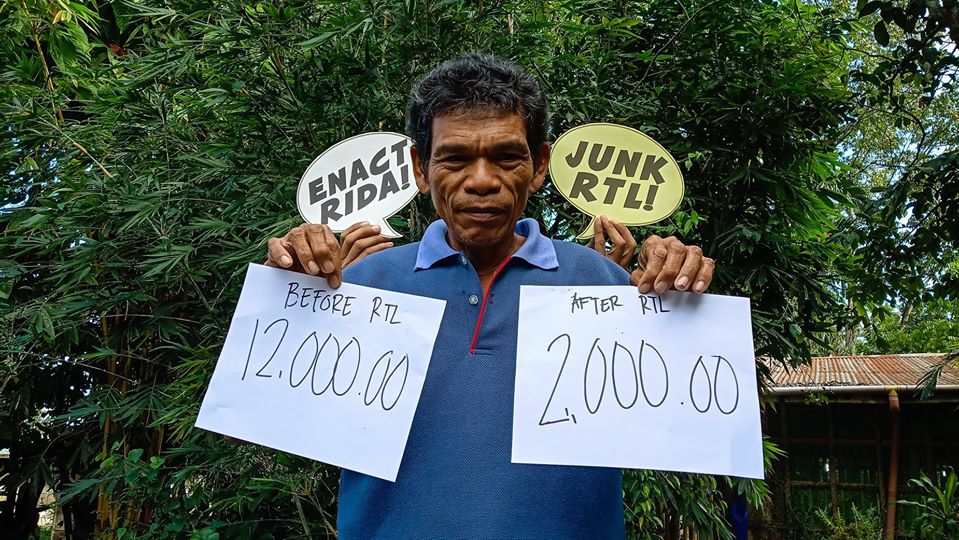Masipag Mindanao farmers reached out to conventional farmers to share alternatives as Rice Liberalization ravages Mindanao rice fields. More than a dozen farmers representing six farmer’s organizations self-assessed the socio-economic impacts of Rice liberalization within their communities and witnessed how Masipag farmers have effectively laid out alternatives in combating the effects of Rice Liberalization (RLL).
It has been a year since Pres. Rodrigo Duterte signed RA 11203 last February 14, 2019 to lift the quantitative restrictions on rice importation due to our obligations under the GATT-WTO Agreement on Agriculture signed two decades ago. Because of this, we are now the world’s biggest importer of rice pegged at 3.3 million metric tons as of November of last year beating China’s imports of 2.5 million metric tons.
A year after its enactment it is clear that the law is a great pest gnawing at panicles of the entire rice industry plaguing the incomes of the more than 5 to 10 million rural folks. Farmers who plant only rice are further pushed into the abyssal plains of bankruptcy and indebtedness. Data provided by the conventional farmers themselves revealed that 75%-85% of their incomes have been lost as farm gate prices of un-husked rice crashed mid-2019. A conventional farmer in South Cotabato declared that due to RLL their net income dropped to a measly 2,000.00 Php from 12,000.00 Php the previous cropping season. While data from Farmer’s Learning Center, an NGO based in CARAGA revealed that conventional rice farmers can incur a loss of 13,829 Php per hectare if they do not own the land they till.
Adding to conventional farmers woes is the fact that prior to liberalization additional taxes on goods have boosted the prices of agricultural inputs by 8%-9%. A bag of urea previously costing PhP 900.00 is now sold at PhP 990.00, while low grade branded cypermethrine a pesticide increased from PhP 250.00/liter and are now sold at PhP 300.00. Tractor driven rotavator rental now amounts to PhP 2,000.00 from PhP 1,800.00 per hectare in the previous cropping.
While the law boasts of a 10 Billion Php Rice Competitiveness Enhancement Fund – RCEF, the impacts of its interventions have yet been felt at the ground level as it has been evident that based on the consultations with the workshop participants that the tools needed to reduce the costs of production have not yet reached rice farmers far and wide. In Arakan for example less than 5% among the people’s organization accessed.
In stark contrast, organic farmers in Mindanao can generate incomes several times over the income of conventional farmers. Masipag Farmer Pacifico Palero Jr of Santo Niño Farmers Association – SINFA shared that because of selling organic black rice he can generate an income of Php 119,518 per cropping season or a monthly income of Php 19,919.00. As such, the potential for growth for organic agriculture is high in the backdrop of RLL.
Testimonies from several organic farmers prove that production of organic produce can still be absorbed by the local market. This debunks the corporate exit proposed by several individuals within government circles who are proposing the export of organic rice, heirloom rice and upland fancy rice which command higher prices at foreign markets.
While we support the promotion of organic rice this should not be used as a stop gap at the expense of the rest of the country’s rice producers. Additionally, the export orientation does not match the current production capability of the organic producers as most of them are small scale. Only big businesses, especially those who have the capacity meet export demands are the ones who will be able to cash in on this. Moreover, certification costs for organic produce for export abroad will be too high for small producers to afford.
Over-all, the activity ended with conventional farmers agreeing to join the Masipag network as they chart a more sustainable future through organic agriculture while joining hands with organic farmers and the broad masses of Filipino peoples in the fight against rice liberalization.
Photo by Masipag Mindanao

